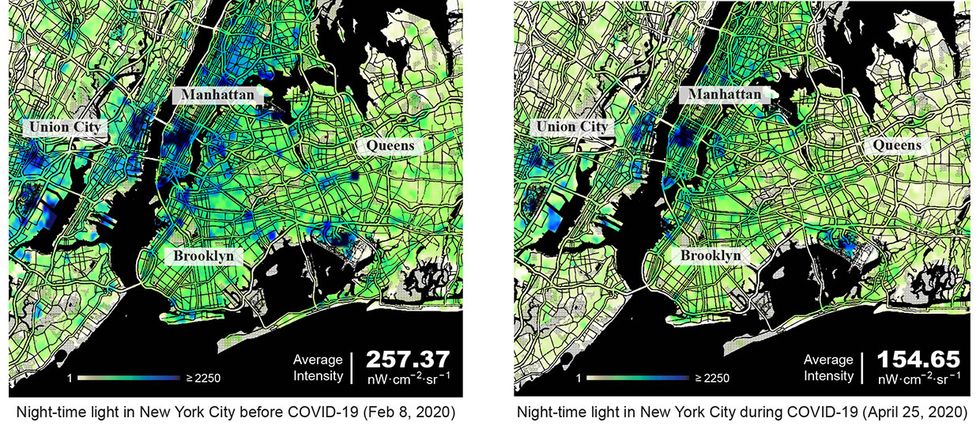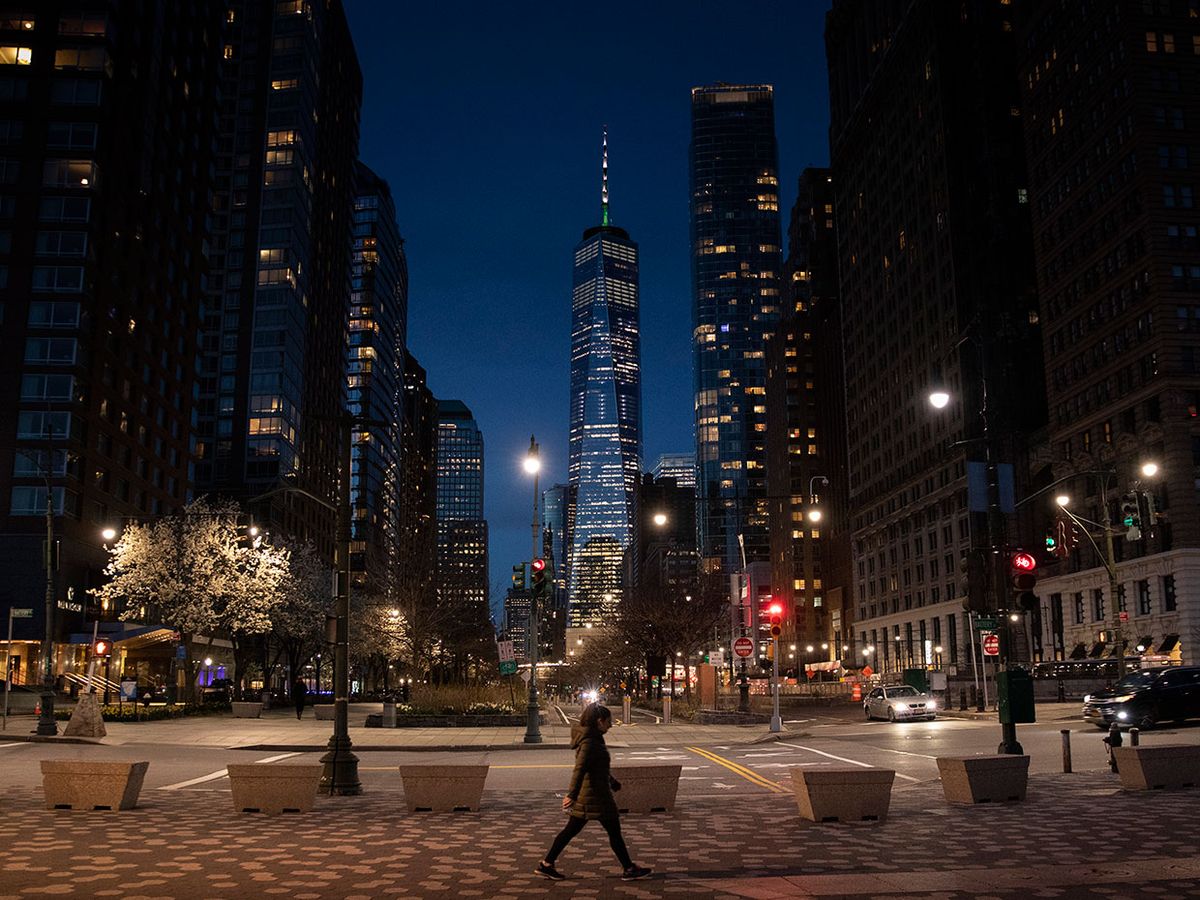As the COVID-19 outbreak swept through Manhattan and the surrounding New York City boroughs earlier this year, electricity usage dropped as businesses shuttered and people hunkered down in their homes. Those changes in human behavior became visible from space as the nighttime lights of the city that never sleeps dimmed by 40 percent between February and April.
That striking visualization of the COVID-19 impact on U.S. electricity consumption came from NASA’s “Black Marble” satellite data. U.S. and Chinese researchers are currently using such data sources in what they describe as an unprecedented effort to study how electricity consumption across the United States has been changing in response to the pandemic. One early finding suggests that mobility in the retail sector—defined as daily visits to retail establishments—is an especially significant factor in the reduction of electricity consumption seen across all major U.S. regional markets.
“I was previously not aware that there is such a strong correlation between the mobility in the retail sector and the public health data on the electricity consumption,” says Le Xie, professor in electrical and computer engineering and assistant director of energy digitization at the Texas A&M Energy Institute. “So that is a key finding.”
Xie and his colleagues from Texas A&M, MIT, and Tsinghua University in Beijing, China, are publicly sharing their Coronavirus Disease-Electricity Market Data Aggregation (COVID-EMDA) project and the software codes they have used in their analyses in an online Github repository. They first uploaded a preprint paper describing their initial analyses to arXiv on 11 May 2020.

Most previous studies that focused on public health and electricity consumption tried to examine whether changes in electricity usage could provide an early warning sign of health issues. But when the U.S. and Chinese researchers first put their heads together on studying COVID-19 impacts, they did not find other prior studies that had examined how a pandemic can affect electricity consumption.
Beyond using the NASA satellite imagery of the nighttime lights, the COVID-EMDA project also taps additional sources of data about the major U.S. electricity markets from regional transmission organizations, weather patterns, COVID-19 cases, and the anonymized GPS locations of cellphone users.
“Before when people study electricity, they look at data on the electricity domain, perhaps the weather, maybe the economy, but you would have never thought about things like your cell phone data or mobility data or the public health data from COVID cases,” Xie says. “These are traditionally totally unrelated data sets, but in these very special circumstances they all suddenly became very relevant.”
The unique compilation of different data sources has already helped the researchers spot some interesting patterns. The most notable finding suggests that the largest portion of the drop in electricity consumption likely comes from the drop in people’s daily visits to retail establishments as individuals begin early adoption of practicing social distancing and home isolation. By comparison, the number of new confirmed COVID-19 cases does not seem to have a strong direct influence on changes in electricity consumption.
The Northeastern region of the U.S. electricity sector that includes New York City seems to be experiencing the most volatile changes so far during the pandemic. Xie and his colleagues hypothesize that larger cities with higher population density and commercial activity would likely see bigger COVID-19 impacts on their electricity consumption. But they plan to continue monitoring electricity consumption changes in all the major regions as new COVID-19 hotspots have emerged outside the New York City area.
The biggest limitation of such an analysis comes from the lack of available higher-resolution data on electricity consumption. Each of the major regional transmission organizations publishes power load and price numbers daily for their electricity markets, but this reflects a fairly large geographic area that often covers multiple states.
“For example, if we could know exactly how much electricity is used in each of the commercial, industrial, and residential categories in a city, we could have a much clearer picture of what is going on,” Xie says.
That could change in the near future. Some Texas utility companies have already approached the COVID-EMDA group about possibly sharing such higher-resolution data on electricity consumption for future analyses. The researchers have also heard from economists curious about analyzing and perhaps predicting near-term economic activities based on electricity consumption changes during the pandemic.
One of the next big steps is to “develop a predictive model with high confidence to estimate the impact to electricity consumption due to social-distancing policies,” Xie says. “This could potentially help the public policy people and [regional transmission organizations] to prepare for similar situations in the future.”
Jeremy Hsu has been working as a science and technology journalist in New York City since 2008. He has written on subjects as diverse as supercomputing and wearable electronics for IEEE Spectrum. When he’s not trying to wrap his head around the latest quantum computing news for Spectrum, he also contributes to a variety of publications such as Scientific American, Discover, Popular Science, and others. He is a graduate of New York University’s Science, Health & Environmental Reporting Program.



